If you're wondering whether this is worth reading, you might want to have a look at the next post which describes the incredible results I obtained with this.
Can we really have an influence on reviews ?
This is the question I asked at the end of my previous post: the five gates to download. I guess this is similar to asking Can you take control of your life? You'd have to be a motivational speaker to pretend it all depends only on you, but we can agree there are always possible steps in the right direction.
Apparently some of the changes I added to some of my apps recently have shown great results so I thought I'd share.
Defining our goals
- getting more reviews
- getting less bad reviews
- getting useful feedback
Let's start with the results
Here are the reviews I got on July 26, 2011 - about one week after my updates were accepted. In green you can see the reviews about apps that include my new system. The other ones haven't been updated yet.
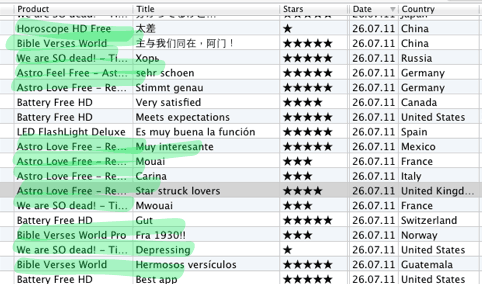
Getting more reviews: achievement unlocked
While the increase in the number of reviews might be partly caused by recently published updates (just one a week ago) I believe they're not the main cause. After all the update spike is only really strong in first 2-3 days.
-
13 of these reviews (in green) are from the apps I recently updated with my new system. That's a large majority despite the fact that the two other apps here ( Battery HD and Led Flashlight ) actually drive 79% of my downloads. So they usually had more reviews than the rest. Since I wasn't sure this experiment would actually end up well I safely tried first on my secondary apps and delayed updating my bigger apps.
-
That's a total of 19 reviews in one single day. Back in march I had about 12 per day despite having more daily downloads and most reviews being about the two big apps !
I think we can call this a victory. Le yay.
Getting less bad reviews and more relevant feedback
I didn't have that many bad reviews (outside some versions released with bugs) so it's not easy to measure if there's been a significant drop in one star reviews. I still get some. All I know is that I now receive several e-mails per day while I hardly received any before. A lot of them are empty but the others mention real problems or at least perceived problems which can be fixed with an explanation.
So how did I do that ?
I always thought of the human mind as a rat in a labyrinth. Yes, I know, I need help and now you're stuck in this article, with me. Anyway, my idea is that if you layout a trajectory for the users they are likely to follow it.
Each of my apps has a '+' button in some corner. This leads to a screen that has several tabs:
- Feedback
- More apps
- Credits
In this article, we're only discussing the feedback part though which happens to be in the first tab, since I consider it the most important. As you can see on the screenshot below this feedback just asks one single question: Do you like this app?
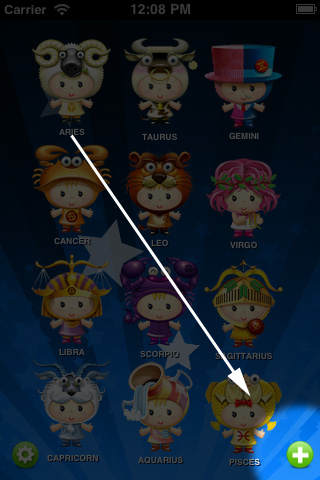
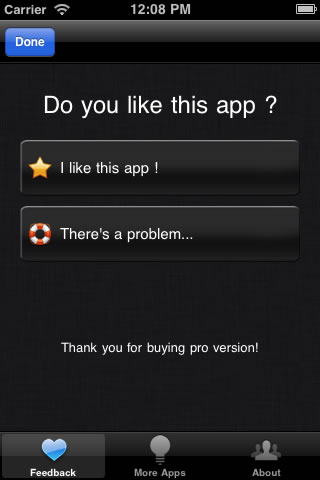
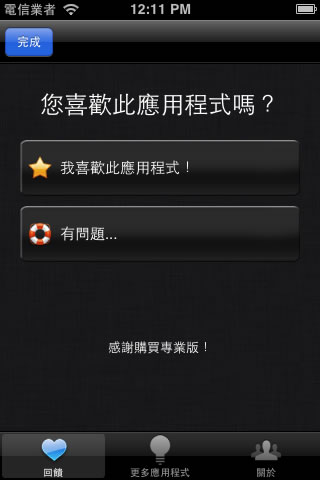
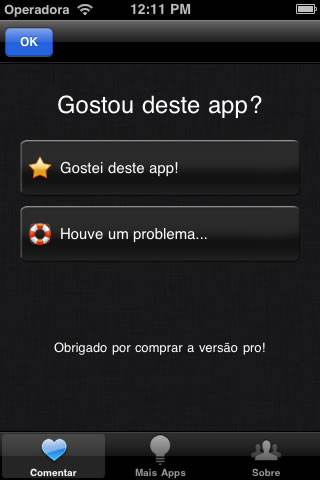
As implied by the simplified chinese and portuguese screenshots, this screen and all the others in the feedback area are translated in pretty much all major languages. When you're dealing with people's feelings about your apps, you do not want to address them in a foreign language.
What we're trying to achieve here is rather evident. Get reviews or word of mouth from people who like the app and get an e-mail from those who don't. Or in other words, let's try to get praised publicly and insulted privately.
Help users that like the app share and review with zero effort
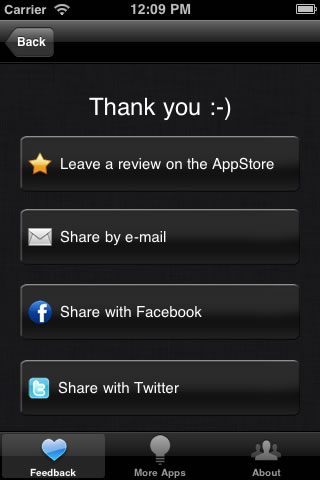 If the user chose "I like this app", then our goal now is to help him praise our product with minimal effort.
If the user chose "I like this app", then our goal now is to help him praise our product with minimal effort.
-
Taking the user directly to your app's page in the AppStore saves him a lot of effort. Remember the last time you wanted to write a review about an app and you had to search for it again in the AppStore ? Try to avoid this happening to your users.
-
When sharing by e-mail, the message is prefilled with a sentence that says "I like this application and I think you should try it too.". Users are lazy, this helps them with a neutral message that's ready to send. If they're half-motivated they might just have enough love to hit the "send" button but not enough to write an e-mail praising your stuff. The text should be neutral enough for the user to be able to easily pretend he could have written it. If your message says "this flashlight app changed my life" people will not send it.
-
When sharing via twitter, prefer launching an existing client app. Users will not want to enter their credentials in your app just to offer you free advertising. Your best bet is that people who tweet regularly will have a popular client installed on their iPhone. Try launching Twitter for iPhone, Twitterrific or TweetBot: you're more likely to get a tweet linking to your app. Again, it's only two clicks: one click to open the URL and one click to send the prefilled message.
If they don't like your app or they found a bug: listen !
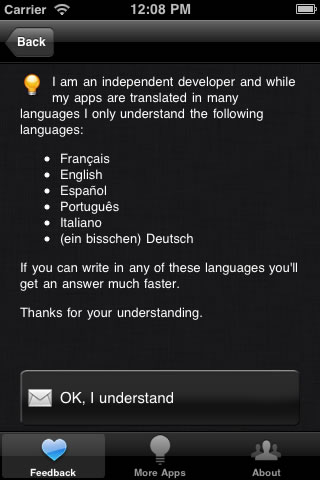
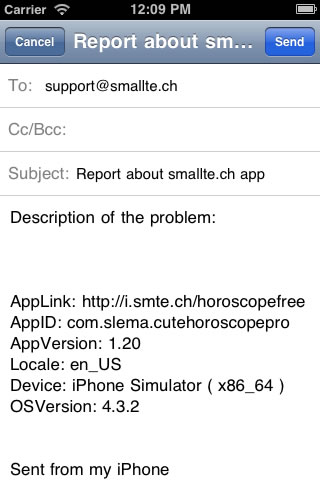
If the user chose "There's a problem", he might be on his way to a flaming one-star review. Before I let the user type his angry e-mail I try to calm him down with an introduction screen.
While this also serves to list the languages I can understand it also mentions I am independent developer. For a lot of people being a little guy is a positive thing. For some reason users often think they're dealing with some huge corporation. If you tell them you're human, they may calm down and talk.
Another advantage of having an integrated e-mail client in your app is that you can finally know everything about the user. Simply add the locale, device model and app version to the message template. You won't have to wonder on what device it crashes or if the user has the last version.
In the following weeks I'll apply this technique to my remaining apps and try to report here after I have some results. Hopefully this will bring similar results (on a larger scale).
At the time of this writing you can see these screens in action in the following apps:
Update: I did update my other apps... and it worked beautifully
The results speak for themselves. Read my next post detailing just how incredibly well this worked.

